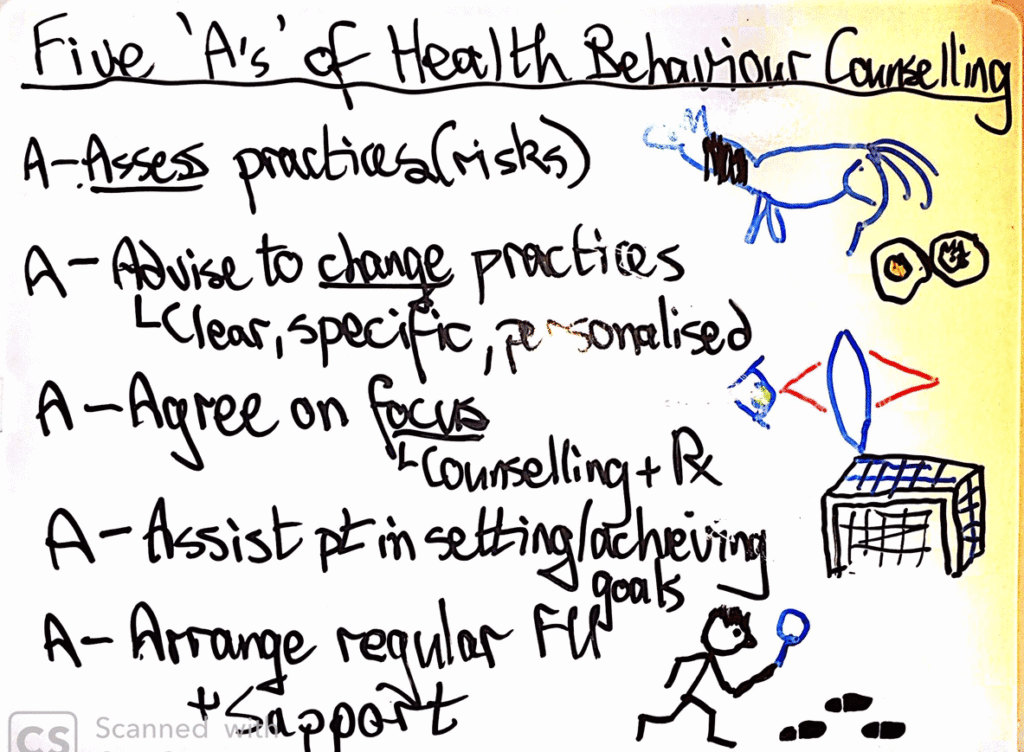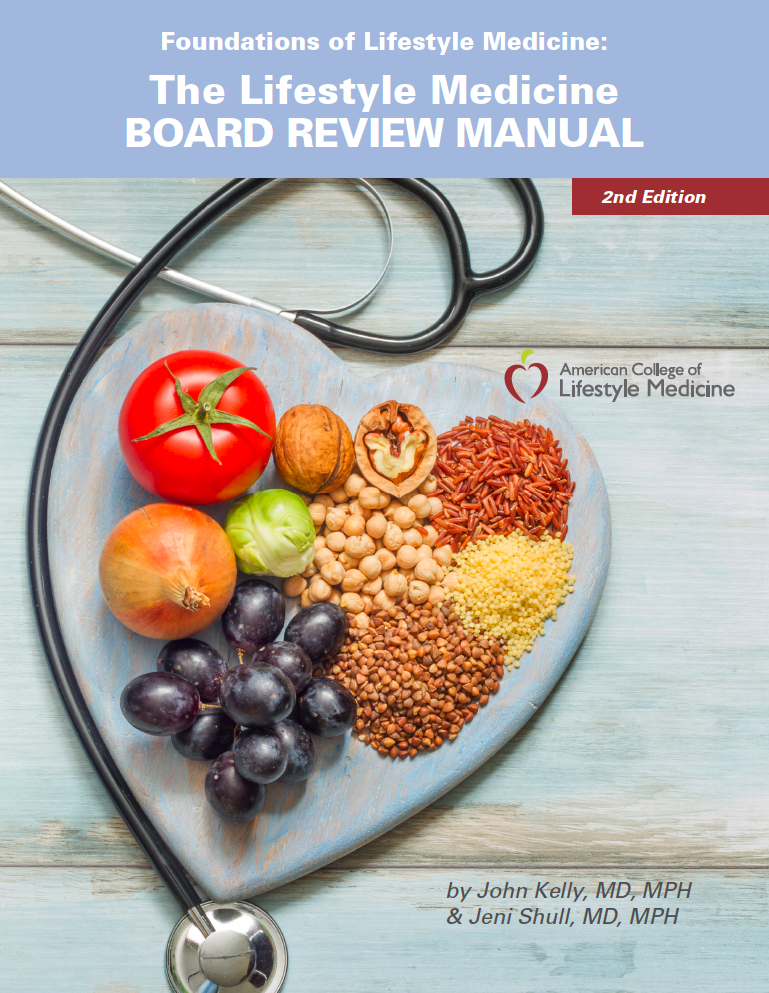Five A’s of Health Behaviour counselling (BR 49):

Just another WordPress site
Five A’s of Health Behaviour counselling (BR 49):

This page is for those preparing for the 2019 American College of Lifestyle Medicine exam in October 2019.
I have had a chance to chat with Dasha (ACLM education person) & Dr Herzog (head of ABLM) – both made it pretty clear that the Board Review book is key in preparing for the exams. My thought was that a very good way to work together would be to divide the Board Review Book into sections among us and make questions to test our knowledge on each section (which we would all have access to). Please order this book ASAP as it take 2 weeks to ship.

Having looked at some of the ways available to make questions that we could all access, one of the better platforms is Brainscape.com (1 min overview video here). with an overview of this resource in the comments below. While there are alternatives, I don’t think they will work because they won’t let us share and update our questions (see here). See this link on how to add cards. I will set up the decks and give each person access to them so that they can add cards for their assigned section of the Board Review Course.
The best way to reach me is via Facebook messenger or Email (subhasganguli@gmail.com).
UpToDate is a subscription service textbook which is continually updated.
While you have to pay to access it, they have an email with recent changes which is free – see below:
11/1/2017 GI update here
As a group of concerned physicians and healthcare workers, we have watched with increasing frustration as our healthcare system is overloaded with diseases such as obesity (which has quadrupled since 1990) [l ], diabetes, and coronary heart disease which are the result of an unhealthy diet and lifestyle.
Our profession is poorly equipped to address these factors and it is essential that government get involved by advocating a healthy diet and lifestyle since this has been shown to be highly effective in decreasing the incidence and reversing these diseases. This was clearly shown in Finland which was able to reduce their rates of mortality from cardiovascular disease by 80% as well as their overall mortality by 62% and their cancer mortality rate by 65% with public health interventions [n ].
The next set of Canadian dietary guideline need to be based on the best scientific data and evidence-based data for change. This is the only way to reduce our growing burden of chronic disease with its associated suffering and healthcare costs.
The following points are clearly based on the peer-reviewed scientific literature and are endorsed by us as health care professionals:
The Canadian Dietary Guidelines should:
Thank you for your consideration of this submission. We sincerely hope that Canada takes this opportunity to develop a food guide which will best serve the health of our country and serve as a leader throughout the world.
Signed,
Here are some questions which you might want to consider as you try and decide which specialty you would like to end up in:
Please review this information thoroughly – these are the key questions to ask for each of the following presentations:
P – provocation – meals, movement, bowel movements
P – palliations – treatments & response
Q – quality – dull/sharp, steady/crampy
R – radiation (where does it go to)
S – severity – scale of 1 to 10, effect on their function
T – timing – frequency, duration, course & progression
Associated symptoms: vomiting, passing gas pr etc
In this section you will find information on various GI diseases and conditions as well as their treatment
Bloating can have many causes. Most commonly it is due to poorly absorbed carbohydrates. When these reach the colon, bacteria digest them and cause hydrogen as a byproduct. There are many different carbohydrates and also many different digestive enzymes to break them down. A specific deficiency of one enzyme will cause bloating due to maldigestion of the associated carbohydrate. For example up to 25% of the population is unable to break down lactose, the carbohydrate in milk (also in sour cream, yogurt, ice cream, cheese, cottage cheese, pizza [with cheese], pasta [with cheese] etc.
In order to successfully find the cause of bloating, you will have to sequentially try and eliminate several different carbohydrates to see if they are the culprit. Just because you can ‘get away with’ eating a particular carbohydrate (eg yogurt), doesn’t rule out maldigestion (ie lactose intolerance).
My suggested approach starts with the most likely causes and moves to the least likely.
Welcome to WordPress. This is your first post. Edit or delete it, then start writing!